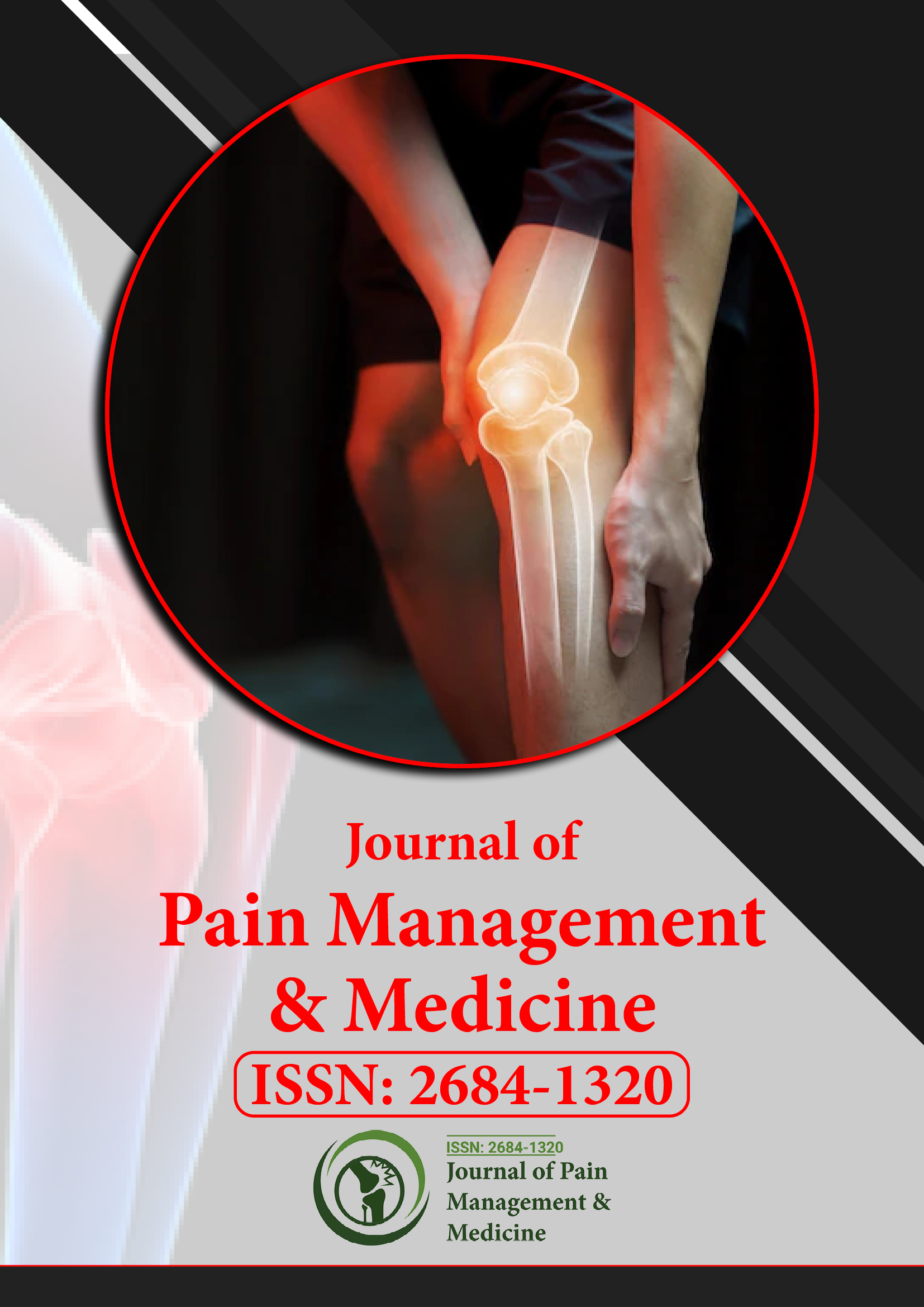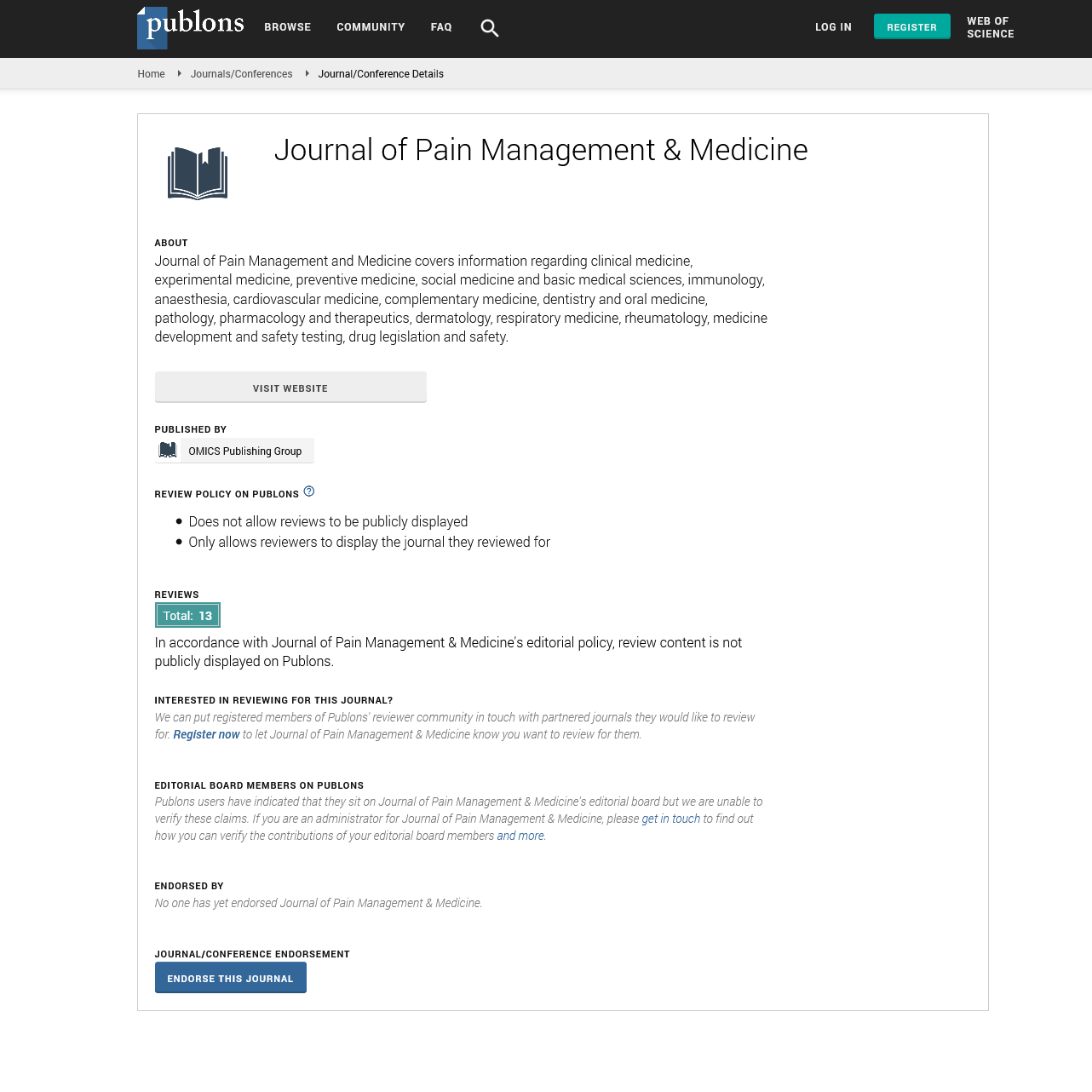Indexed In
- RefSeek
- Hamdard University
- EBSCO A-Z
- Publons
- Euro Pub
- Google Scholar
- Quality Open Access Market
Useful Links
Share This Page
Journal Flyer

Open Access Journals
- Agri and Aquaculture
- Biochemistry
- Bioinformatics & Systems Biology
- Business & Management
- Chemistry
- Clinical Sciences
- Engineering
- Food & Nutrition
- General Science
- Genetics & Molecular Biology
- Immunology & Microbiology
- Medical Sciences
- Neuroscience & Psychology
- Nursing & Health Care
- Pharmaceutical Sciences
Commentary Article - (2024) Volume 10, Issue 6
Trigeminal Neuralgia: Mechanisms, Risk Factors and Diagnosis
Alberto Garcia*Received: 28-Oct-2024, Manuscript No. JPMME-24-27640; Editor assigned: 30-Oct-2024, Pre QC No. JPMME-24-27640 (PQ); Reviewed: 13-Nov-2024, QC No. JPMME-24-27640; Revised: 20-Nov-2024, Manuscript No. JPMME-24-27640 (R); Published: 29-Nov-2024, DOI: 10.35248/2684-1320.24.10.304
Description
Trigeminal Neuralgia (TN) frequently referred to as the “suicide disease” due to its excruciating and debilitating pain is a chronic condition affecting the trigeminal nerve, one of the most essential nerves in the brain responsible for Ocular sensations. The condition causes sudden, severe and shock such as pain in the face, usually caused by the simplest activities including chewing, speaking or even touching the face. Despite its severe impact, advancements in understanding and managing trigeminal neuralgia have provided optimism for many patients.
The trigeminal nerve, also known as the fifth brain nerve, is the largest brain nerve and provides sensation to the face and motor functions for consuming. It has three main branches: Ophthalmic branch (V1) supplies sensation to the forehead, eyes and upper part of the nose. Maxillary branch (V2) covers the cheek, upper lip and upper teeth. Mandibular branch (V3) affects the jaw, lower lip, lower teeth and part of the tongue.
Trigeminal neuralgia primarily affects the maxillary and mandibular branches, although it can involve any part of the face. The condition is classified into two main types: Classic (Type 1) TN characterized by sudden, sharp and intermittent pain that lasts from a few seconds to two minutes. Atypical (Type 2) TN is characterized by persistent, burning or suffering anxiety, which can occur along with periodic acute pain. The challenging condition of TN is characterized by periodic pain phases that are frequently caused by small stimulation, significantly impacting a patient's daily activities.
Causes of trigeminal neuralgia
Trigeminal neuralgia results from abnormal functioning of the trigeminal nerve, but the mechanisms can vary. Common causes include: Neurovascular compression is the most common cause of TN is compression of the trigeminal nerve by an adjacent blood vessel, such as the superior cerebellar artery. This pressure damages the myelin layer, a protective layer around the nerve, leading to erratic pain signals. An individual with Multiple Sclerosis (MS), the myelin layer is damaged by the immune system, results in TN is a common symptom of the disease. Tumors near the trigeminal nerve, such as acoustic neuromas or meningiomas, can compress the nerve and lead to neuralgia. Trauma or injury, dental procedures or surgeries involving the trigeminal nerve can result in its dysfunction and the emergence of TN.
Risk factors of trigeminal neuralgia
Certain risk factors increase the probability of developing TN.
Age: TN most commonly affects individuals over 50 years old.
Gender: Women are more probable to develop TN than men.
Family history: A predisposition to genetic disorders may play a significant role in some cases.
Diagnosis of trigeminal neuralgia
Accurate diagnosis is essential for effective management, as TN can be confused with other types of facial pain. The diagnostic process typically involves: Detailed medical history healthcare providers assess the nature, duration and triggers of the pain, distinguishing TN from conditions such as migraines or cluster headaches. Neurological examination exam can help to identify abnormalities in facial sensation or motor function. Magnetic Resonance Imaging (MRI) frequently used to identify neurovascular compression, tumors or MS-related lesions affecting the trigeminal nerve. MRI with contrast improves to identify tiny changes in blood vessels or other structures that compress the nerve. Exclusion of other conditions such as dental disorders, sinus infections or Temporomandibular Joint (TMJ) dysfunction can simulate TN.
Citation: Garcia A (2024). Trigeminal Neuralgia: Mechanisms, Risk Factors and Diagnosis. J Pain Manage Med.10:304.
Copyright: © 2024 Garcia A. This is an open access article distributed under the terms of the Creative Commons Attribution License, which permits unrestricted use, distribution and reproduction in any medium, provided the original author and source are credited.

